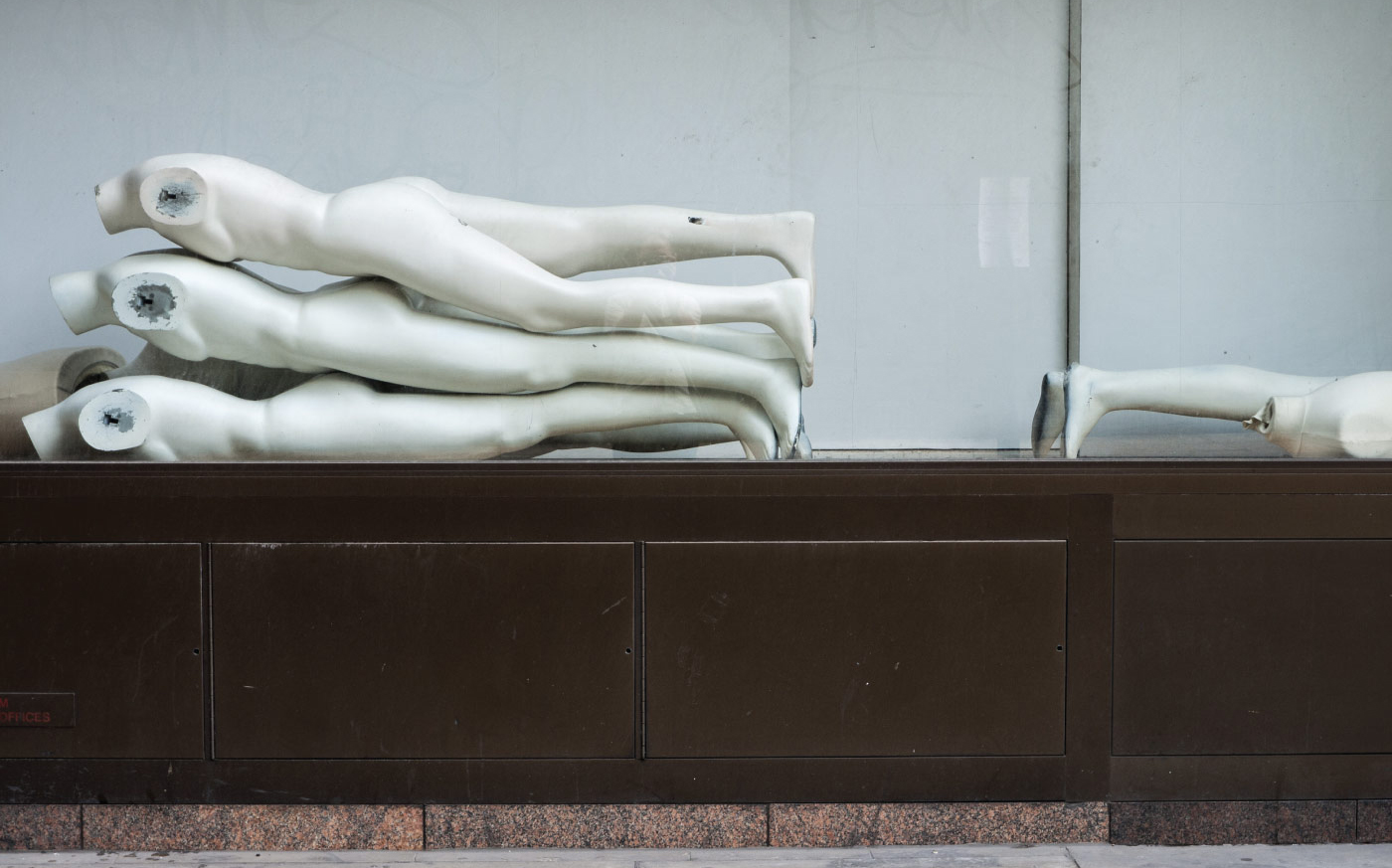The retail apocalypse was already in motion long before anyone had heard of the coronavirus. Online shopping, led by the omnipresent tech behemoth Amazon, has been gobbling up brick and mortar sales year after year. But, as it turns out, Amazon ain’t got nothin’ on COVID-19 when it comes to retail obliteration. We’ve all been witnesses to this virus’s ability to make Amazon its errand boy—and Amazon is seriously struggling to keep up the pace. What we previously thought was the retail apocalypse was really just a lengthy warm-up exercise for retail’s quick demise. Major retailers across the globe have closed indefinitely. Millions of retail employees are laid off or furloughed. We are left with the aftermath of a society now conditioned to fear both human contact and touching items or surfaces with high public exposure (two rather crucial aspects of brick and mortar).
Some retailers that supply essential goods are actually faring well in this scenario, namely, supermarkets, pharmacies, and not surprisingly, Bezos’ brainchild. Brick and mortar essential goods retailers have quickly improvised to accommodate social distancing guidelines, but in the future, admission control, traffic patterns within the store, and check-out line management will require technology and efficient protocols to make the shopping experience more safe, seamless, and user-friendly. Even essential-providers within retail will need to consider the paradigm shifts now occurring in both the sector and society as a whole. Widely accepted norms and generalized assumptions about consumer behavior are bound to change.
There isn’t really an accurate historical comparison to this pandemic, but The Great Depression might be the closest contextual scenario economically-speaking. It too had worldwide, decades-long implications for consumer behavior. The Silent Generation, who grew up during that time, never knew if there would be food on the table each day. Scarcity of food left lasting impressions on their psyche and behaviors. Eventually, this generation taught their children values like “saving for a rainy day,” which is probably the foremost reason my mom has always maintained a well-stocked supply of canned goods for as long as I can remember.
The effects of this pandemic have the potential to also be generational. The International Monetary Fund (IMF) is predicting “The Great Lockdown” to be the worst economic downturn since The Great Depression, and the longer the lockdown persists, the more dire their predictions become. Aside from the economic impact on consumer behavior, the pandemic presents additional complications in terms of human behavior. Social distancing, fear of contamination, and widespread disease and death will also have lasting effects on people’s psyche and behavior.
If The Great Depression produced The Silent Generation, who carried a mindset of scarcity throughout the rest of their lives, then I propose “The Great Lockdown” will produce “Generation House Arrest,” and they will have a mindset of avoiding physical human contact and crowded places, compounded with scarcity. If so, retailers will see a decrease in time spent in brick and mortar stores and an acceleration in online shopping—a trend that began before the pandemic now drastically propelled forward. Retailers who have created strong omnichannel infrastructures are poised to do well in the aftermath because they can accommodate changing consumer needs more easily. Mobile apps that allow customers to shop the real-time inventory of a physical store will be particularly important, but they require retailers to have a solid network in place and many currently lack the bandwidth.
Read more from propmodo

Going forward people will be more concerned with cleanliness, sanitation, and indoor air quality. They may be hesitant to touch surfaces or products in public spaces, especially items that are tried on or frequently touched by other people. Thrifting and sustainability, which was having a serious moment before the pandemic, will most likely see a downturn. Nordstrom had just opened a luxury consignment shop in its New York City flagship, but second hand goods may be even harder to swallow than “new but tried-on” for most people. Even for stores not hocking used wares, this could devalue their value proposition a bit as one of the main reasons people still shop for clothes at a stores rather than online is because it gives them the ability to try clothes on before buying.
Down the road, a hesitancy to try on items could lead to a more widespread adoption of AR (augmented reality) technologies in both physical and digital retail spaces. Retailers like Uniqlo, Neiman Marcus, and Sephora had already installed AR-powered virtual mirrors, like those used by the character Caleb in a recent episode of HBO’s sci-fi series Westworld. Caleb was virtually trying on expensive suits in order to steal a man’s identity (and money, which was protected by an encryption key in his blood). While retailers won’t be investing in blood-encrypted payment methods anytime soon, the future is beginning to resemble science-fiction more each passing day. Most retailers would do better to focus their investments on making the check-out process as seamless and “no-touch” as possible with simple mobile device payments. No blood required.
Post pandemic, people may be hesitant to travel, especially globally, which will affect retailers in locations particularly dependent upon tourism like airports and seasonal destinations. We might see an increase in pop-up stores or store concepts like B8ta, which allow customers to experience the latest products from a variety of retailers in one place. We will definitely see retailers building their online presence and looking to digitally native brands as examples. Barry Sternlicht is the CEO of Starwood Capital, the global investment firm behind Starwood Property Trust, a $16 billion real estate portfolio. In a recent webinar, Sternlicht stressed the importance of brand identity, citing retailers like Warby Parker and Bonobos that “started online and have been moving very aggressively into physical retail.” These brands had loyal followings before they transitioned to brick and mortar, providing a solid customer base to build upon. “In order to survive in this new world, you have to stand for something, an emotional content that gives you pricing power,” said Sternlicht.
The longer this pandemic lasts, the more drastic its effects will be—the primary reason Sternlicht hopes scientists will create a vaccine as soon as possible. “If they keep the country closed for nine months to a year, it will be the great depression,” said Sternlicht. One study predicts that the United States’ gross domestic product will fall five percent for every month that persists, even with only partial economic shutdowns. Due to increased demand for online goods and same day pick-ups, retailers are already facing logistical challenges that will need to be addressed. Converting vacant retail stores into service hubs and warehouses was proposed as a solution even before the pandemic, and it is still a good bet. This pandemic has the potential to be the kiss of death for shopping malls as we know them. Imagine a world with no Jay and Silent Bob, beloved characters from the cult movie Mall Rats, inspired by 90’s American teenagers who hung out at the mall. “Generation House Arrest” may never know what kind of cultural center the mall played in many American cities and towns.
Changes in consumer behavior, psyche, and spending patterns will have long term implications for the world of retail real estate. Experts predict many retailers that temporarily closed for the pandemic will not be able to reopen their doors, especially those not equipped with solid omnichannel capabilities. If ever there were to be a paradigm shift in consumer behavior, now’s the time. But innovative retailers, the ones that are quick to innovate in particular, may be able to find opportunities to actually grow their businesses through new avenues using technology and acquire a bigger chunk of their markets.
Finding the retail brands that are poised for growth after the virus is imperative for any retail landlord. The winners and losers will be determined by the changes that are made now, in the face of a different buyer psychology. Stores that are able to tap into the world’s new retail demand will continue to grow. The ones that don’t will continue their moribound descent into insolvency. The future may be largely digital, but there will always be a place for a physical shopping experience in our lives. Predicting what place it will have exactly should be the focus of both retails and the retail real estate industry because for most stores and the properties they occupy, it is a matter of life and death. [Propmodo]
